OVERSTEER ROAD TEST: Ford Falcon XT EcoBoost
A four-cylinder Falcon?! The SHOCK! The HORROR! It’s just NOT RIGHT! It simply CAN’T BE TRUE! It must be a TERRIBLE CAR… actually, it’s not. It’s a very impressive car indeed. We know, because we have driven one extensively…
Opinions on the idea of a four-cylinder Falcon tend to be discolored by Holden’s disastrous attempt at the same thing in the in the Commodore in 1980. Admittedly, they did it by sawing two cylinders off its venerable inline six and, in doing so, created an engine so awful and humourously underpowered that, in real life applications, it managed to use more fuel that the six anyway.
The Starfire engine (or as those cheeky Aussies soon started calling it, the Shitfire) was a hard lesson and the simply reinforced the fact that for a real Aussie bloke to buy it, a real Aussie car had to have at least a six under the bonnet.
Until now, that is Bruce, because the EcoBoost Falcon calmly refutes that claim, rolls it up and shoves it up your outback. It really is that good.
Outside
Not that you may pick that from the outside.
The most distinguishing feature of the EcoBoost Falcon is its complete and utter lack of badging that refers to what is under the bonnet. Or much else for that matter.
You get “Ford” badges, a sole “Falcon” badge and that’s it. No “EcoBoost” and certainly no “2.0” to be seen anywhere. In fact, all you get is generic FG Falcon base model XT in a color that looks – despite the fact that they haven’t used them for many a year now – like an unmarked police car. In fact, people slow down when they see you, just in case…
While the FG has had a vague facelift to coincide with the release of the new engine, you would have to be a real trainspotter to notice it. It still looks handsome and has aged better than the Commodore, but is starting to look old now.
Inside
Same here really. Sensibly laid out and still supremely comfortable, the inside of the Falcon is showing its age.
The comedy 8-bit digital readout is amusingly base-spec, as are the various SID-chip bleeps and chimes that are emitted when it requires your attention. Or when Mario dies or something.
Nothing new or even vaguely interesting here really. The seats are still utterly brilliant and I still smack my left knee on the bottom of the steering column EVERY SINGLE BLOODY TIME I get in or out of it and it’s all pretty much base-model Falcon business as usual.
Nothing to see here, please move on…
Under The Bonnet
Now this is where things start to finally get interesting.
The 179kW/353Nm turbo four is remarkably smooth and strong and is both far smoother and quieter at idle than the six, but also more refined under cruising power. Under hard acceleration it only betrays its four-cylinder roots via the sound it makes as it powers the big Falcon along.
The 80 to 120km/h acceleration is particularly impressive (for passing, you understand…) while pushing beyond that reveals not only an even harder edge to the turbo-four snarl, but a second burst of even more impressive acceleration that hides way up in the “Instant Loss of Licence” zone of speed…
But what of the fuel consumption? Ford lays claim to 8.1L/100km for the EcoBoost and during a week of normal day-to-day commuting around town we easily saw 9.1. But wait, it gets better…
Throw in a bit of open road driving and that average will quickly drop into the mid to high sevens, while if you REALLY try out on the open road, it will dip down into the sixes. In fact on one extended “really trying” stretch we saw 6.2L/100km on the average readout.
Not that anyone is ever going to drive like that, but any single-figure running from a car the size of a Falcon is impressive, especially when you take into account that thrashing it like a red-headed step-child over a winding back road only just sees the average climb into the double figures (11.6L/100km) following a bit of open road cruising. So while it may lose a bit in the way of towing capacity in the move from the nuggety low-down grunt of the old 4.0-litre six, it gains far more in terms of refinement and, wait for it, handling.
On the Road
Now the FG Falcon has always been a pretty handy bit of kit through the twisty stuff, but without the weight of the old boat anchor over the front axle, it now has even an even crisper and sharper attitude to turning in. Unfortunately the steering is way too light and fluffy (a throwback to the 80s perhaps?) to make the most of the precision, but it is still a remarkably fun car to throw through a winding stretch of road. Especially for such a large car.
The nose tucks in nicely when asked to and simply tracks precisely around corners. The steering is desperately overly-assisted, but retains a degree of feedback that only really serves to make you want more.
Still, as if to make up for this, the rear end is constantly talking to you. Where the V8 FPVs, turbo-six FPVs and Falcons and, to a certain degree, nat-atmo sixes, constantly engage the rear in a battle of grip versus sideways physics fun, the EcoBoost doesn’t do this.
Oh, sure, sideways fun is never far away and can be provoked at will, but the slightly lower power and torque (and less weight) make the EcoBoost Falcon a far more delicate car to drive, more willing to be adjusted.
The rear is constantly letting you know what it is doing, as opposed to struggling with brute power and neanderthal throttle inputs. It is a car you have to drive through corners, rather than just stick the boot in and let physics sort it out. Arguably, it is also a far more satisfying car to throw around
Verdict
Impressively powerful, smooth, frugal and refined, the 2.0-litre EcoBoost engine is a welcome addition to the Falcon range. But will anyone buy it? Ford has unashamedly aimed the car at the fleet market in New Zealand, and this is a sensible strategy, as appealing to the fleet desire for smaller engines and lower emissions is an easier task than getting your average punter that thinks a Falcon MUST have a six to accept it.
But it’s still a hard road ahead of them, as the biggest rival the EcoBoost Falcon has is part of the Ford stable; the same engine in the Mondeo is even more impressive and the Mondeo is a more modern car that looses minimal size to the Falcon in reality…
As it stands, the Falcon EcoBoost is a brilliant car. In XT form it is missing a lot of kit (but then, so does the 4.0-litre XT) but still offers a brilliant ride, sharp handling, extraordinary comfort and, for once for a Falcon, impressive fuel economy.
It only starts faltering when you look what else you can get for the same price, or with the same engine in the wider Ford family. Still, it’s a great start and shows that the Big Aussie Car need not hurtle headlong down the path to extinction that it is currently being pulled towards by their prehistoric engines.
Ford Falcon XT EcoBoost Specifications
Price: $48,490
Body type: 4-door sedan
Drive: Rear-wheel drive
Engine Type: Inline four-cylinder petrol
Engine Capacity: 1999cc
Max power: 179kW @ 5500rpm
Max torque: 353Nm @ 2000rpm
Fuel Consumption: 8.1L/100km
C02 emission: 192g/km
0 to 100kph: n/a
Front suspension: Double wishbone
Rear suspension: Control blade independent
ABS Brakes: Yes
Air Bags: 6
ESP: Yes
Air Conditioning: Manual
Lap/diagonal belts: 5
Satellite Navigation: No
Electric seats: Partial
Burglar Alarm: Yes
Panic Button: No
Wheel type: 16-inch alloy

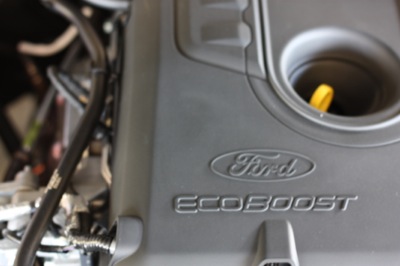
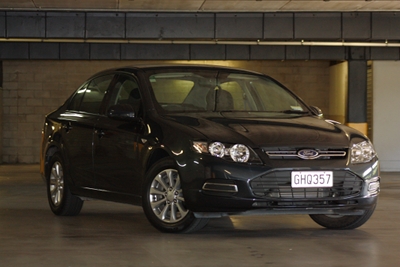
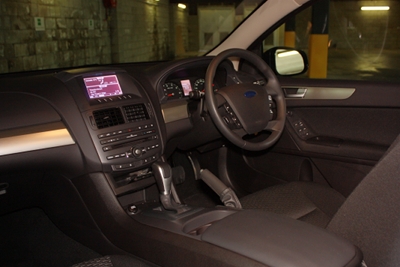
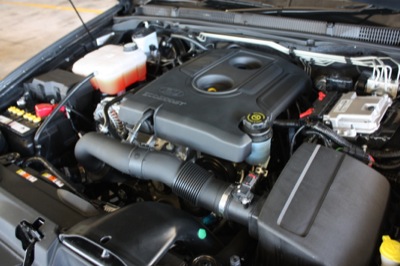
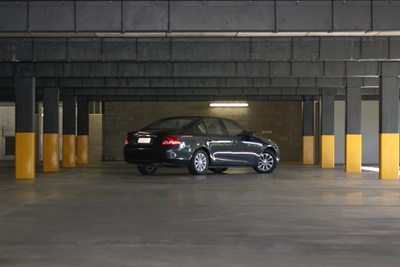


You must be logged in to post a comment.